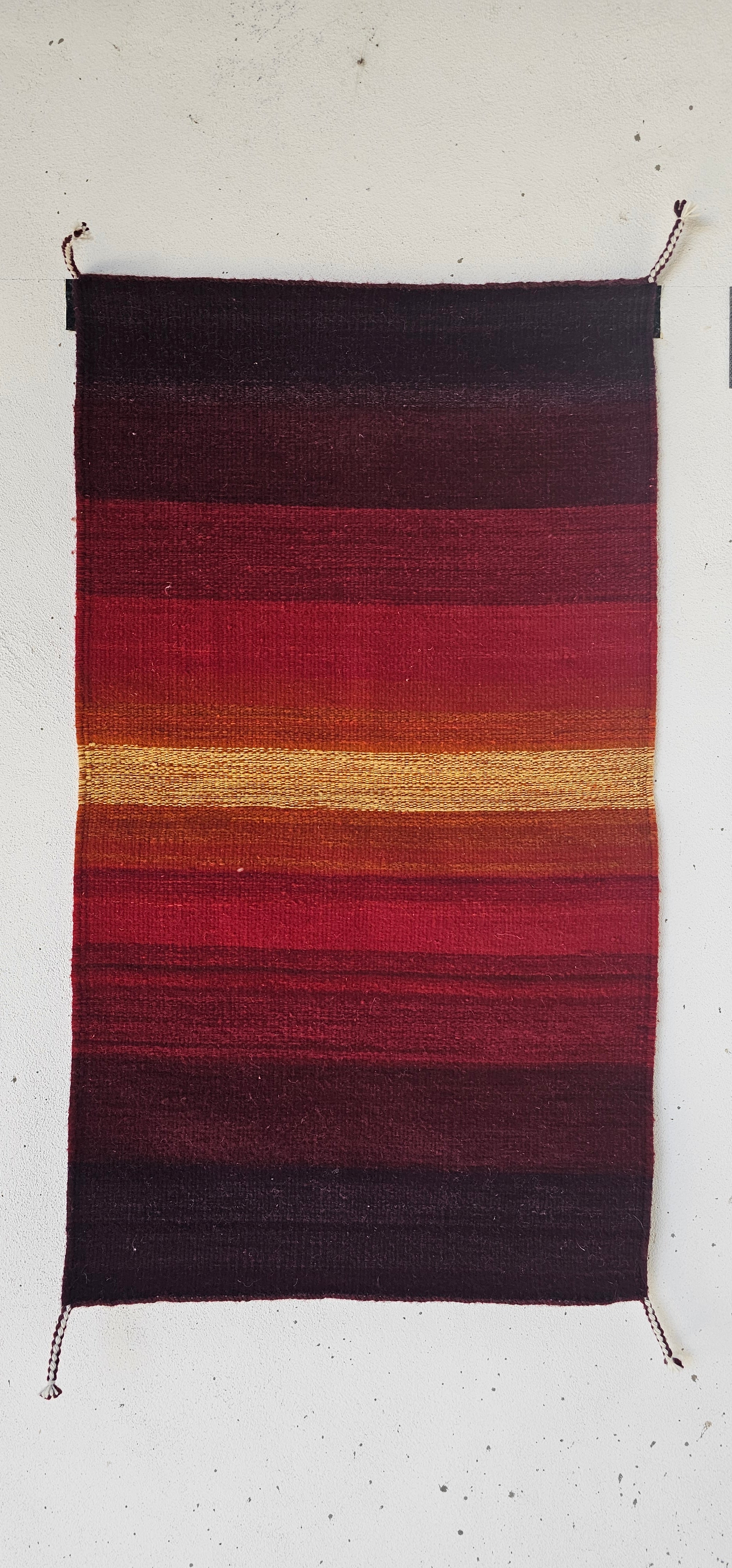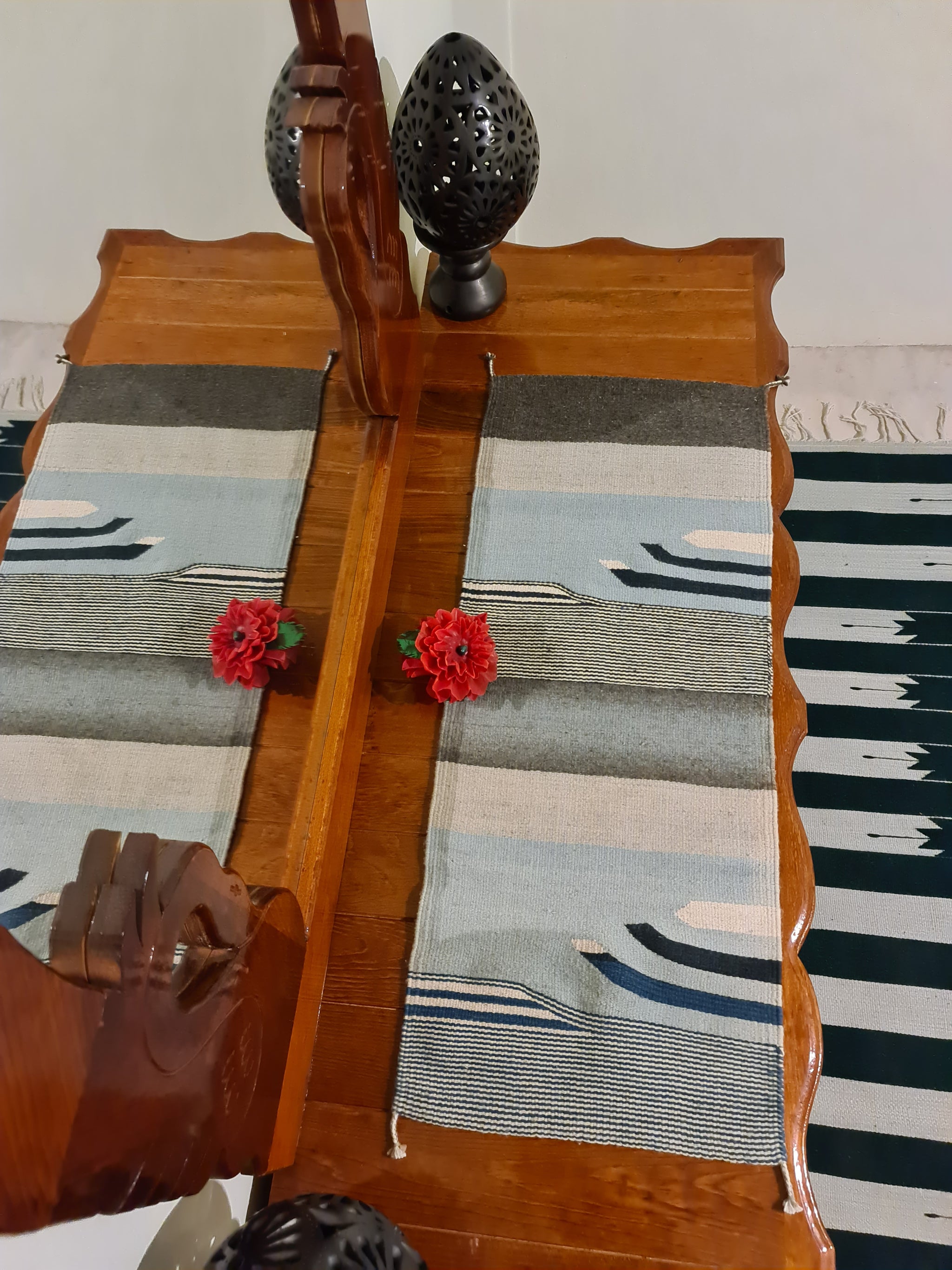Beæz: frog medicine
$ 7,000.00
Size: 60x100cm; 2x3ft
Materials and methods: criollo sheep wool hand dyed with color fast aniline dyes. Hand woven on a Zapotec walking loom of the 16th century style using a 7 threads per inch reed.
Weaver: Justino Martínez Mendoza
This ancient motif depicts a sacred frog which in our language is called beæz. The word for frog is the same word for Jaguar, aplied for referring to newborn babies, chilli seeds, cencers, and many sacred, delicate, powerful objects or animals. The word beæ means to divide or mark, such as to divide the land to assign a piece for cultivation to a family, or to mark with lines the meat to cut up later (imagine the claws of the Jaguar governor). The word Beæ in its simpler root is related to mushroom and ants that live underground. Mushrooms allow us to communicate with the natural world and the ants lead us in that direction, also if you have felt the bite of a red ant you would agree that it is as powerful as a Jaguars bite 😉 We have described in other posts how ants help us predict the rain patterns with our fine tuned observations and intuition.
Unfortunately in our Zapotec culture we stopped using the sacred frog and toad medicines due to the Spanish genocide to our people and the Catholic persecution of our rituals. In spite of that loss we keep the medicine encoded in our language and when we refer to frogs and toads we put them in the same sacred space as Jaguars, new born babies, powerfull chilli seeds and sacred incence burners. We know that by protecting the frogs and toads environment they can thrive and sing to the rain so that our cornfields don't go thirsty. We know that our prayer is one, our songs are one and when it rains, it rains for every species.
The sacred frogs and toads have been "discovered" by the modern world and I see them everywhere on the internet being sold as a healing experience for every illness that human kind can suffer. Unfortunately no amount of sacred medicine will ever be enough if we don't give back to nature, if we don't abandon our ecocidal ways of life, if we keep taking from nature, from indigenous people and never giving back to the web of life that is severely under treat in all directions. This era calls for humanity to turn back from ecocide and to embrace our role as nature stewards and land tenders to maintain the delicate balance that makes life possible on earth. We have embraced technological advances that makes life more comfortable, faster and more connected. I believe we can leverage the positive potential of our current technologies if put to good use. We have already extracted and transformed these precious resources that use intensive energy so lets put that to good use and with our actions, may our spirit find the balance between heaven and earth.
Share:
Related Items
Punta Cometa: fire tending
$ 4,600.00
60x100cm; 2x3ft Materials ans methods: criollo sheep wool hand dyed with colorfast aniline dyes using an exhaustive method. Handwoven on a Zapotec style loom of the 16th century adapted from European...
River Spirit
$ 3,110.00
Size: 40x100cm; 16in x 3.2ft Weaver: Zenaida Lopez from San Miguel del Valle Materials and Methods: Criollo sheep wool hand dyed by Leonor Lazo and Samuel Bautista using xiuhquilitl (indigo)...
Yaag Chei: tree of life
$ 5,500.00
Size: 60x100cm; 2x3ft Master Weaver: Samuel Bautista Lazo Materials and methods: criollo sheep wool spun in the mills of the Batalla family in Tianguistengo. Hand dyed yarns by Leonor Lazo using...



























